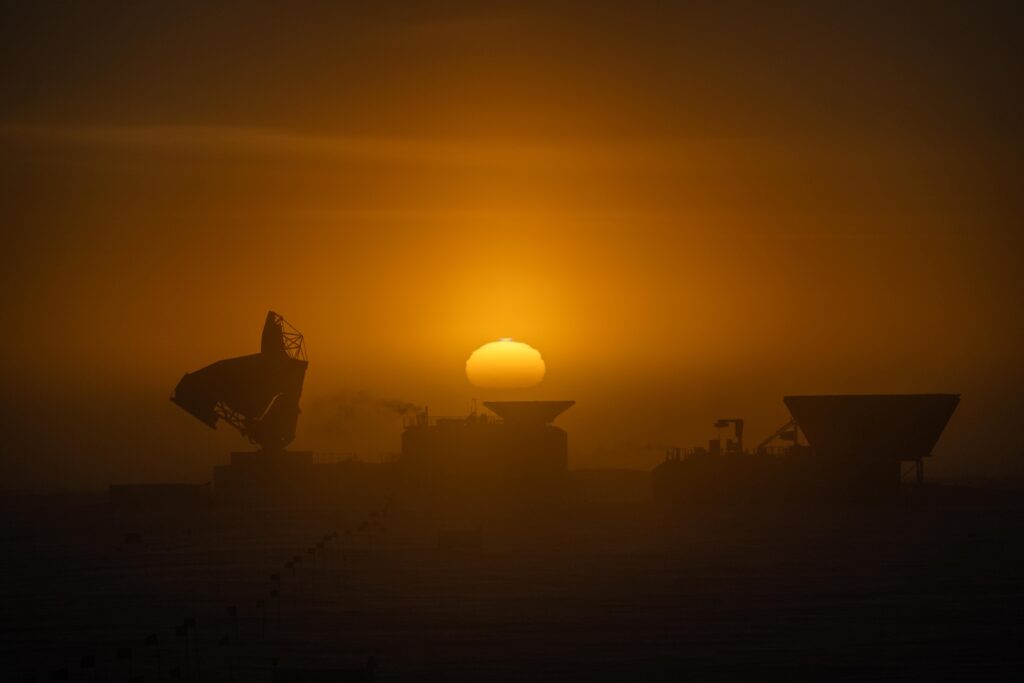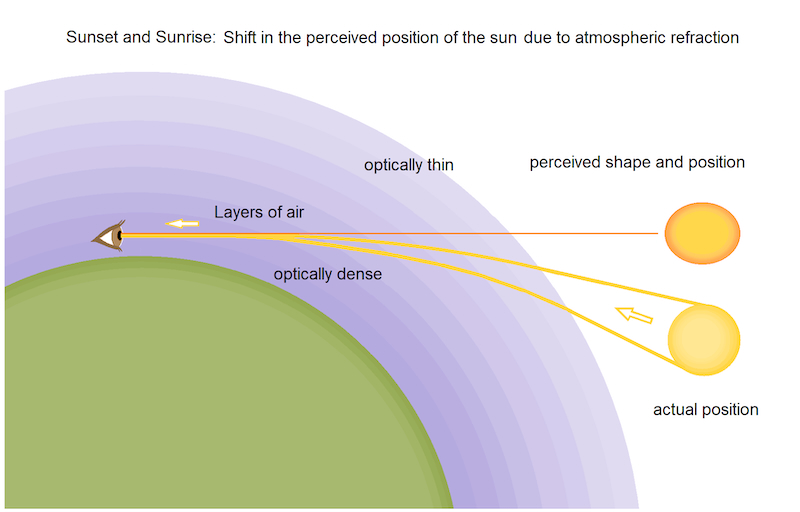The official account of the South Polar Telescope published an image taken by photographer Josh Montgomery. It demonstrates what the last equinox looked like in Antarctica.

The equinox comes at the moment when the center of the Sun crosses the equator in its apparent motion along the ecliptic. This moment marks the beginning of astronomical spring in one hemisphere of our planet (in this case in the north) and astronomical autumn in the other hemisphere (in this case in the south).
On most of our planet, the moment of the equinox does not differ much from the previous and preceding day. But the picture at the poles is completely different. There, for exactly half a year, the Sun is above the horizon. After the solstice, it gradually descends until, finally, during the next equinox, the polar sunset comes, turning into a semi-annual night.
This moment is captured in Josh Montgomery’s picture. If there were no atmosphere on our planet, then on the day of the equinox at the poles of our planet, exactly half of the Sun above the horizon could be seen. But atmospheric refraction “lifted” the solar disk by about half a degree. Therefore, on the day of the equinox, both at the north and south poles, the Sun is above the horizon all the time, albeit very low.

In the picture, the sun is above the South Polar Telescope. It is located on the territory of the Amundsen-Scott base, which is located exactly at the south pole. The telescope is a radio observatory with a 10-meter antenna that conducts observations at microwave, millimeter and submillimeter wavelengths. It studies the microwave background, galaxy clusters, and is also a member of the Event Horizon Telescope collaboration, which received the first ever images of silhouettes of supermassive black holes.
Follow us on Twitter to get the most interesting space news in time
https://twitter.comne/ust_magazine


